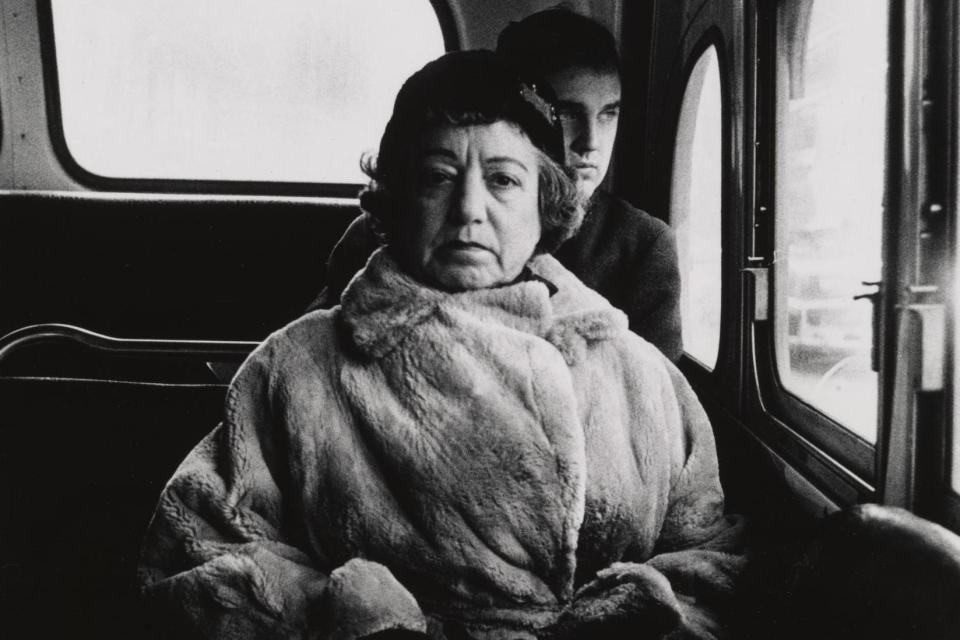Diane Arbus and Kader Attia review: Portraits of outsiders resonate in two revelatory shows
Diane Arbus’s pithy philosophical phrases are dotted throughout the Hayward’s revelatory show of her early photos of 1956 to 1962.
“A photograph is a secret about a secret,” says one. “The more it tells you the less you know.” And the secrets are enthralling. In her images there’s a flicker of connection, a vivid presence, yet also unknowable depths and complexity; the mystery of the subject, the magic of her eye and camera.
Arbus started slowly. Her husband Allan gave her a camera in 1941 when she was 18, and for 15 years she occasionally made images. In the couple’s fashion photography business, he was the photographer, she the art director. It was only in 1956 that Arbus first numbered a roll of 35mm film. She is best known for the square-format photographs made between 1962 and her suicide in 1971, particularly A Box of Ten Photographs (1970), featuring some of the greatest: the twins, the giant and his parents, the young man in curlers.
One portfolio is at the Hayward as a postscript. The earlier photos were barely known until recently, stored after Arbus’s death in her darkroom and only unearthed years later. But they’re haunting and poetic, technically and compositionally varied.
They reflect her later preoccupations with outsiders and innocents: the magnetic stare of a girl stepping onto a kerb; a stripper in her Atlantic City dressing room; Long Island female im-personators; circus performers.
Many of the joys are in the unexpected and ephemeral, such as a blurry newspaper on a dark pavement in Windblown Headline. With each image displayed on individual cubic columns, you jump between subjects and time periods, glimpsing and glancing before being captivated. It’s a superb show.
Kader Attia’s series The Landing Strip is arguably an update of Arbus’s New York transvestites from a post-colonial perspective. The transgender people he’s photographed in Paris since 2000 are illegal immigrants from Algeria, many working as prostitutes.
Attia aims to describe their world fully: not just the difficulties but the moments of happiness. Theirs is a curious existence, caught between expressing their identities and remaining hidden. In a video, The Body’s Legacies, Pt 2: The Postcolonial Body, various thinkers discuss the enforced cultural invisibility of colonial subjects in Parisian suburbs. Attia argues these are also spaces of control. His chilling video The Robespierre Tower is like a drone surveilling residents in a modernist block, what he calls an “open-sky jail”.
This control extends to museology: Measure and Control, a series of vitrines featuring taxidermy animals and African masks, comments on categorisation emphasising colonial dominance over non-Western cultures. Meanwhile, masks with a surface of mirror fragments represent his response to a Picasso exhibition in which the artist’s African influences were ignored — your Cubist reflection stares back at you from Attia’s masks.
While there’s anger in Attia’s work, its core concern is with repair that ac-knowledges the damage of empire. His masterpiece The Repair from Occident to Extra-Occidental Cultures draws together horrific projected images of First World War injuries with wooden sculptures based on them, busts of African figures and masks and other objects that have been broken and repaired. Displayed alongside books and journals on everything from sculpture to First World War history, it’s an exhibition in itself. It’s also a remarkable reflection on the capacity of societies to reflect on past violence and its contemporary scars.
Both exhibitions run from tomorrow until May 6 (southbankcentre.co.uk)



